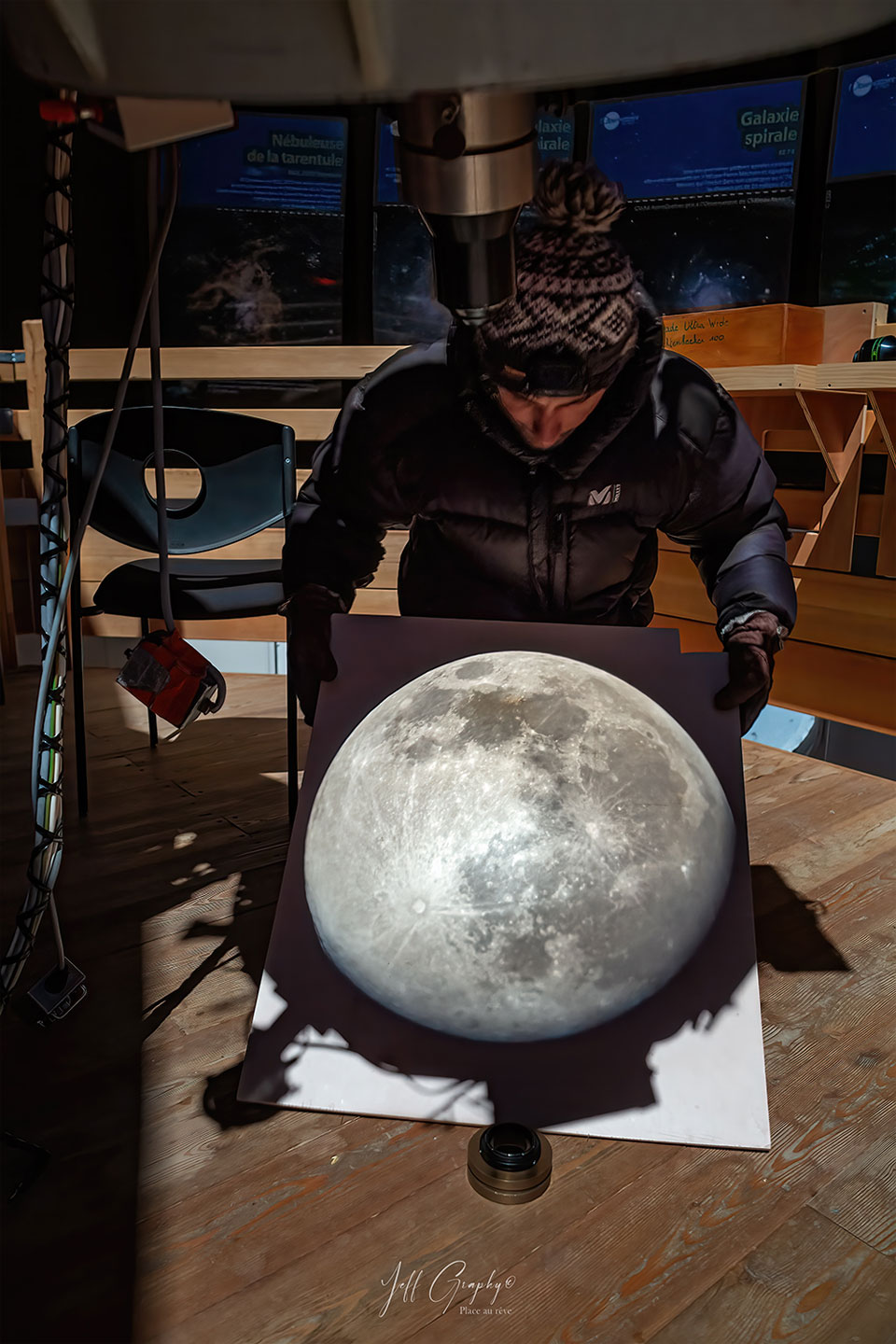2022年2月28日
Direct Projection: The Moon in My Hands
Image Credit & Copyright: Jeff Graphy
Explanation: You don’t have to look through a telescope to know where it’s pointing. Allowing the telescope to project its image onto a large surface can be useful because it dilutes the intense brightness of very bright sources. Such dilution is useful for looking at the Sun, for example during a solar eclipse. In the featured single-exposure image, though, it is a too-bright full moon that is projected. This February full moon occurred two weeks ago and is called the Snow Moon by some northern cultures. The projecting instrument is the main 62-centimeter telescope at the Saint-Véran Observatory high in the French Alps. Seeing a full moon directly is easier because it is not too bright, although you won’t see this level of detail. Your next chance will occur on March 17.
Tomorrow’s picture: dueling bands
直接投影:手边的月亮
影像提供与版权: Jeff Graphy
说明: 你不必透过望远镜观看,才能知道它指向何处。把望远镜的影像投影到大面积的表面上,好处是可以降低极端明亮天体的亮度。这样的减光操作在观测太阳时就很有用,例如于日食期间。然而,在这幅单曝光主题影像里,所投影的是过于明亮的满月。这轮出现在2星期前的二月满月,北半球的某些文化族群称之为雪月。进行这项投影的仪器,则是位在法国阿尔卑斯山顶圣韦兰天文台的62公分口径望远镜。直视满月并不难,因为它并没有亮到会炫目,不过却无法见到上图所呈现的细节。在3月17日,你就有机会再看见满月。
明日的图片: dueling bands







